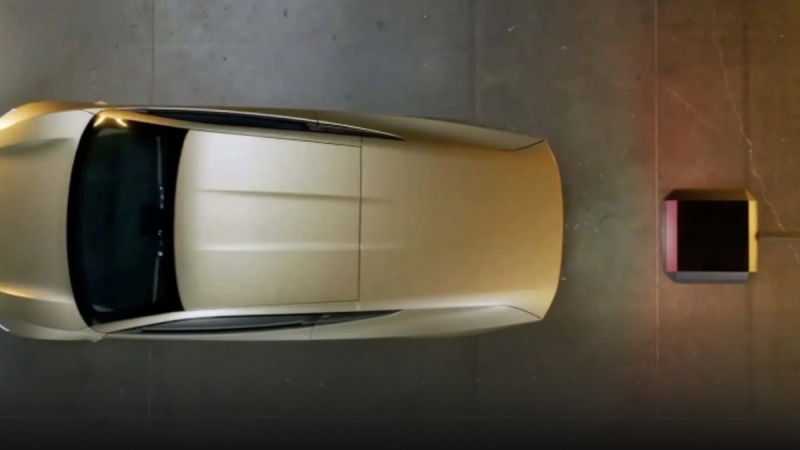
Wireless robotaxi charging/Tesla
Tesla previewed its upcoming wireless charging system at the We, Robot event. Participants were able to capture several screenshots showing the main elements of this innovation.
The Full Self-Driving (FSD) system supports an automatic docking station for wireless chargers. This is reported in the publication Tdrive.
On the slides, Tesla showed its new wireless charger. It looks like a big square with a cable on the back that connects to the power supply. The design looks minimalistic, which makes it easier to keep the device clean and position it correctly for optimal performance.
However, the most interesting thing is that Tesla showed not only the visual design of the device, but also technical specifications. Currently, Tesla's Level 2 wall charger operates at 48 amps at 240 volts, providing up to 11.5 kW of power to charge an electric vehicle. The efficiency of this device is rated at 99.33%, although it varies with the distance between the charger and the service box.
200% Deposit Bonus up to €3,000 180% First Deposit Bonus up to $20,000Instead, the new wireless charger is estimated to be able to operate at an even higher power rating of around 80 amps at 240 volts, allowing it to charge a vehicle with more than 20 kW of power. That's twice as much as the current wall charger. As for the current loss, with a capacity of 80 amperes, the charger meets the new electrical standards, where 60 amperes must be followed by 100 amperes.
Robotaxi wireless charging
No hands required pic.twitter.com/XL746DkGhb
— Tesla (@Tesla) October 18, 2024
Will wireless charging be effective?
Tesla has previously revealed that its wireless charging system will be very effective, although it is currently unknown to what extent these figures will be in real-world conditions. The problem of regular charging is one of the main obstacles for many electric car owners, and the implementation of an automated wireless solution could significantly facilitate this process. Such a device could accelerate the adoption of electric cars among consumers and become a significant advantage for Tesla over competitors.
If the new wireless charging technology proves to be as effective as traditional wired counterparts, it could be a breakthrough for of the entire electric car market. With convenience and ease of use, automated wireless charging systems could take the burden off drivers who no longer need to plug in cables every time. This, in turn, could contribute to a greater number of electric car owners and achieve a transition to ecological transport.

